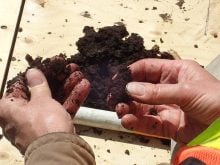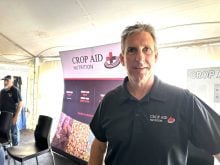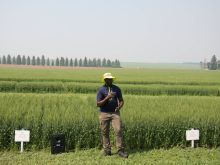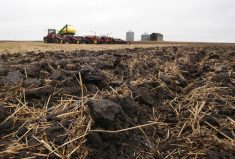Most farms don’t do even one yearly soil nutrient test per field, but maybe they should be doing three.
Three tests would enhance farmer understanding of in-field variability in a way that one test cannot.
Why it matters: Soil tests that demonstrate the variability of field conditions might prompt producers to adopt a three-test approach.
Read Also
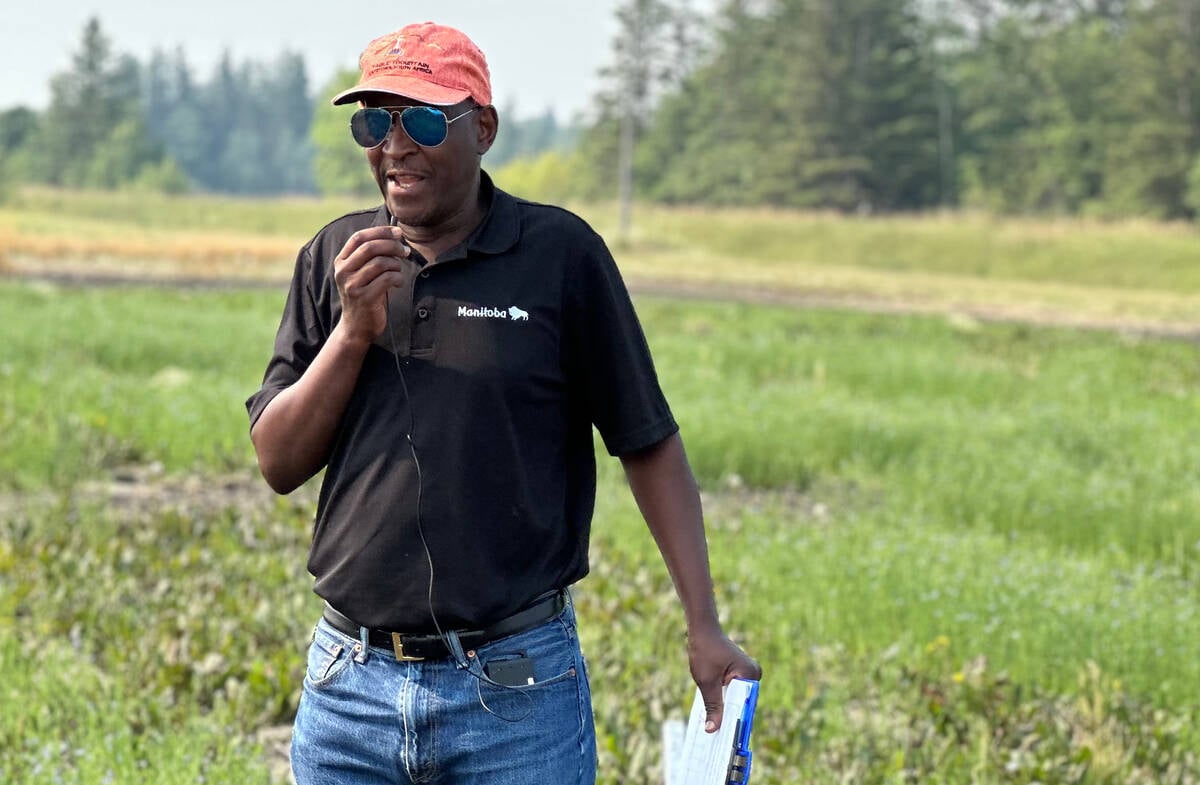
How much nitrogen can farmers really cut?
Manitoba fertilizer trials look for nitrification inhibitor sweet spot, to lower greenhouse gas emissions and cost without hurting yield.
According to Fertilizer Canada’s 2022 fertilizer use survey, only 40.7 per cent of Prairie farmers soil sampled each canola and wheat field. In the Canola Council of Canada’s 2022 grower survey, 40 per cent of respondents said they test each field each year. This up from 31 per cent in 2020, but still not a majority.
“Soil testing is grossly undervalued,” says Steve Barron, agronomist with Double Diamond Farm Supply in southern Manitoba.
The most common soil sampling method, for those who do it, is to submit one composite sample per field with cores collected from mid-slope topographies. Mid-slopes are usually the most consistent and larger zones within each field.
If submitting one sample to represent a field, experts say this approach makes sense.
But according to the three-test argument, a mid-slope test doesn’t show the low-performing or inconsistent-performing hilltops and low areas. When farms apply a blanket rate across the field based on the ideal rate for the mid-slopes, large areas may or may not get the right fertilizer rate. Without getting those areas tested, it’s impossible to know.
Tips for triple testing
If producers try triple testing on at least one field this fall, they should select one known to be highly variable. From there, they should submit one composite from mid-slopes, one from hilltops and one from low areas.
“This will help farmers better understand field variability,” says Troy McInnis, agronomy manager for Moose Jaw Co-op in Saskatchewan. “Armed with that awareness, it could open up a comfort level in going down the path of variable rate.”
Starting the journey
Double Diamond Farm Supply is one of many companies with a soil sampling service. When farms hire it to collect a composite sample, the company first creates a field map with 15 mid-slope GPS pins throughout the field.
Sample sites are based on topography, yield and sometimes NDVI imaging maps to identify good target sites for samples. The technician, armed with the map, collects 15 or so cores, divvies them into zero-to-six inch and six-to-12 inch (or six-to-24 inch) bags and submits the two bags to the lab.
If a farm decides to add hilltop and low spot samples, Barron recommends the same technique – 15 cores collected from a few hills (two or three per hill) divvied into zero-to-six inch and six-to-12 inch depths. Repeat the process in low areas.
Another option is to target a specific problem area.
“The only scenario where targeted sampling makes sense is if you’re trying to diagnose a particular problem or figure out why that precise area is producing more,” Barron said.
Warren Ward, canola council agronomy specialist and nutrient management lead, heard of one such scenario during a conversation with his neighbour. The farmer had observed wildly swinging yield within a field that had been short of moisture and was curious about the cause.
“For fields where moisture was the same but yield was surprisingly different, an extra soil sample targeted at one low-yielding area could help with diagnostics,” Ward said.
Results from those low-yielding areas could then be compared with the mid-slope composite to tease out the issue.
Using discoveries
Three samples for one trial field this fall could reveal soil characteristics or nutrient levels that could be solved with targeted management, proponents say.
If results from low areas show significantly lower pH, higher salinity or lower residual nitrogen than mid-slopes, that information can be a stepping stone to further investigation. Perhaps those areas would benefit from lime to increase pH, perennial forage to manage salinity or a higher nitrogen rate.
If hilltops are low in sulphur and the farm plans to seed that field to canola next year, target spreading of sulphur on hilltops could help yields, especially if the mid-slope analysis recommends a sulphur rate that is too low to remediate the hilltops.
“I would suggest contacting an agronomist to talk through management steps,” Ward said. “More soil tests and some check strips may be required to test whether an investment in extra lime or sulphur is worthwhile.”
Most farms don’t take these steps. Fertilizer Canada’s 2022 survey showed only 24 per cent of western Canadian canola growers varied fertilizer rates on a field-by-field basis, and only 13 per cent use variable rate technology to vary by zones.
The same survey showed farms that soil test also have higher yields. But do they have higher profits? That is the question the triple test could start to answer.
Funds for soil testing
Canola growers can get up to $20,000 for soil tests this fall through the Canola 4R Advantage, a program centred around promoting fertilizer best management practices.
Another $20,000 is also up for grabs for consulting services to develop field zone mapping for variable rate nitrogen.
The program requires growers to have a 4R Nutrient Stewardship Plan verified by a 4R designated agronomist. The plan must include the beneficial management practices that will be included in the fertilizer application.
Producers have until Nov. 30 to apply. Relevant expenses invoiced and paid by growers between April 1 and March 31, 2024, are eligible. More information and application portals are available on the Canola Council of Canada’s website.



